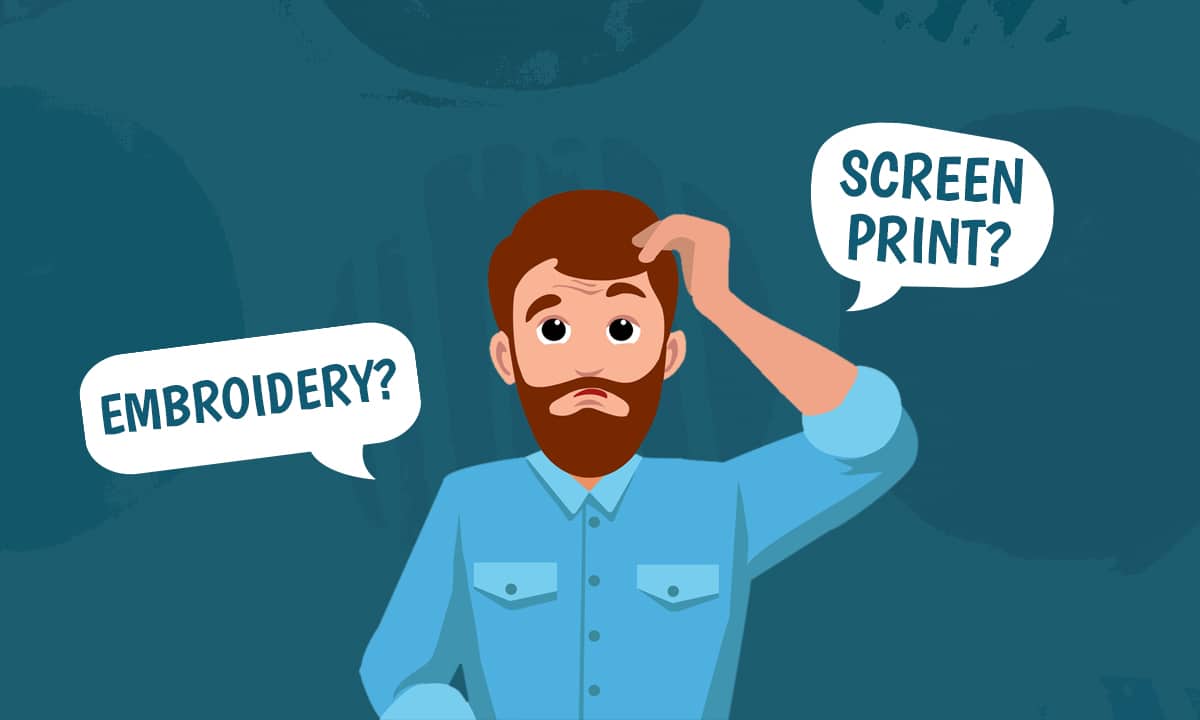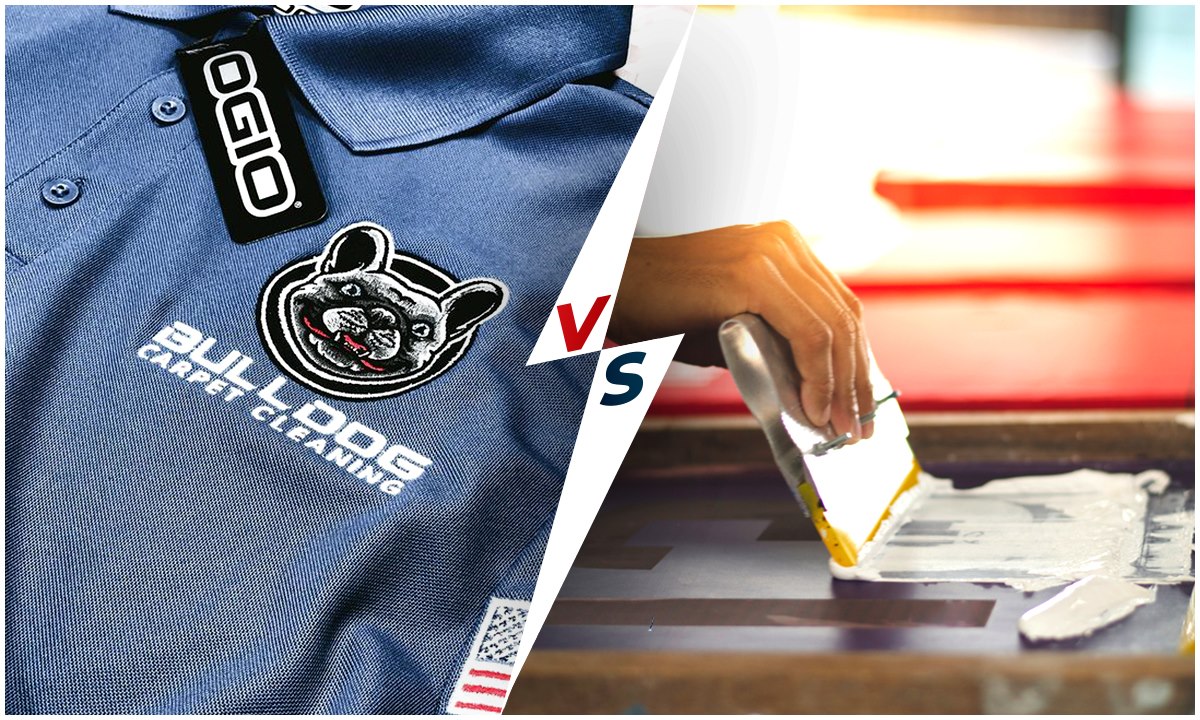When you are looking to get a branded uniform or a garment made with specific branding such as a company logo, you will be met with a few different choices. There are lots of different ways to transfer designs onto t-shirts and other garments.
A lot of people are left to choose either screen printing vs embroidery, and in this guide, we’ve explored a lot of the different pros and cons between the two.
Both have their positives, and there are a lot of different considerations in the difference between screen printing and embroidery. Below, we delve into their uses as well as how you can choose which is ideal for your next project.
What is Embroidery? What is It Used For?
Examples of embroidery from history include tapestries from ancient times. The logo or design is stitched directly into the material. For example, embroidering a logo onto the chest area of a polo shirt. This adds a design that protrudes from the fabric and is used correctly it can be very effective. In the modern age, you can even use machines to embroider materials.
Embroidery service is often used for smaller designs as it can be really demanding when it comes to materials. Embroidery also tends to be quite intricate and if it is done by hand it can take an incredible amount of time.
What is Screen Printing? What Is It Used For?
Screen printing can add a logo or design by transferring ink through a mesh screen. This means that even large designs can be transferred onto a t-shirt or large areas of other fabrics such as the back of a hoodie, for instance.
There are some very advanced screen printing machines on the market but some methods can be used involving hand printing. Anyone can make a screen printing press if they want to, but obviously, the professionals are usually far better at this, and professional screen printing tends to be better quality than homemade screen printing.
What are The Differences Between Embroidery and Screen Printing?
What are some of the differences that separate screen printing and embroidery? Understanding the pros and cons that both have will probably quickly and easily show you which is going to be the ideal solution for you. If you are looking to make five high-quality garments for a workforce, compared to 100 decent quality free giveaway t-shirts, the chances are you might go for different printing options.
Is Embroidery More Expensive Than Screen Printing?
The embroidery vs screen printing price is definitely something to think about. There isn’t one specific way to work out the price, you will need to get quotes. However, a complex design will probably cost more no matter which method you use. For instance, more colors on a screen printed design will cost more. This isn’t necessarily the case with embroidered logos, but they do tend to be expensive, especially if you are looking to get a big design. Larger designs need more resources and take a lot more time.
If you want a large, single-color design then screen printing might well be the best solution when it comes to the cost, but this is just one example. So many different factors go into the cost of a screen printed or embroidered design. It is worth getting some different quotes when you are looking to create your own garments.
Does Embroidery Last Longer than Screen Printing?
Again, so much goes into the design of a logo or t-shirt design, so it can’t be categorically stated how long the designs will last.
Both embroidery and screen printing needs to be taken a lot of care of and washed with precautions so that they don’t get damaged. In general, embroidery will probably last longer than a screen-printed design.
Screenprints, especially poor-quality ones, don’t tend to last forever. Eventually, the design starts to crack or areas of it start to fade. Many of us have experienced this with our beloved favorite t-shirts cracking.
Embroidered clothes can have a different issue. They might get snagged or the thread might pull or become loose.
Which Process Is Best For Different Types of Garments?
Though both of these methods can be used on virtually any garment, there are some patterns that have emerged. We’re used to seeing embroidery on some types of garments and screen printing on others.
Large designs tend to suit bigger t-shirts, hoodies, or bigger areas that need to be covered with a large design.
Embroidery tends to be used on sports clothing, and for small logos on polo shirts, t-shirts, and even hoodies and caps. Some lighter, poor-quality garments could well start to shrink if they are embroidered, so you will usually only see the technique used on quality garments. Most of us have bought a polo shirt at some point with embroidered logos, and most of us have bought t-shirts with a big design screen printed on the front.
It’s very much a case of matching up the design or logo with the method of printing. Both screen printing and embroidery are much easier to do in the modern age. Computerized designs and machine printing can make it much more straightforward, and big designs and large orders can be processed more quickly, whichever the garments are being altered.
Conclusion
The majority of the decision on whether to use embroidery vs screen printing will be made based on design and garment. A little company logo on a work polo shirt might well be embroidered, either on a machine or by hand. However, for bigger designs, especially ones that don’t use many colors, it is easier to make big orders by using the screen printing process.
Both of these methods can have an excellent end result, but there are so many different techniques and potential issues with printing, so it is always best to work with a reputable company to get your t-shirts or other garments created.
Table of Contents
table
Recent Blogs

A Guide to Onboarding New Employees

The Best Ideas for Work Anniversary Gifts

Let’s Socialize
Never Miss a Thing
Subscribe to our newsletter and stay updated to our offers and deals!

